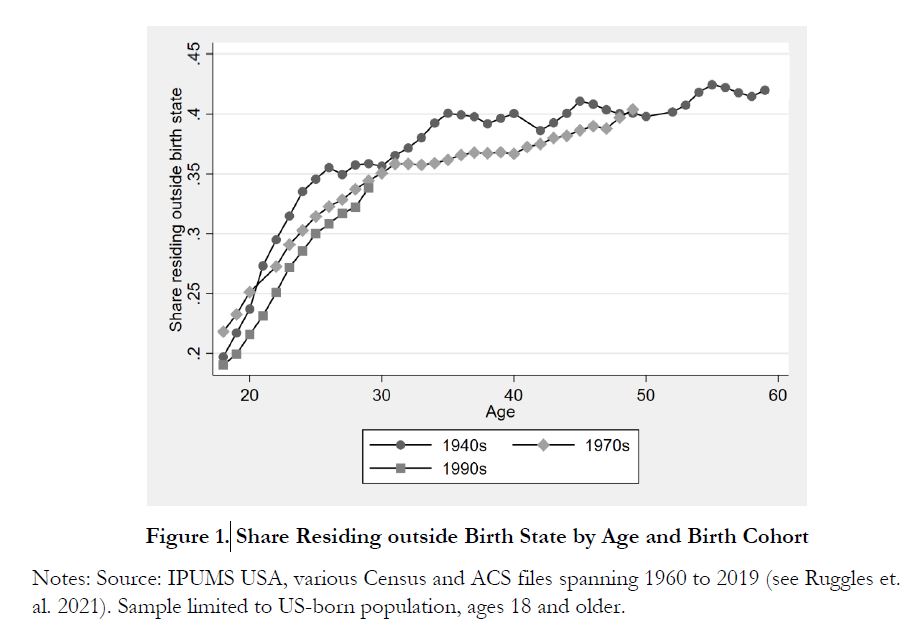Thursday, February 3, 2022
The Economics of Internal Migration: Advances and Policy Questions
From a new paper by Ning Jia, Raven Molloy, Christopher Smith, and Abigail Wozniak:
“Internal migration patterns in the US have drawn growing attention among researchers, policy analysts, and others. This interest has been driven by two trends. First, internal migration in the US has fallen for more than three decades (Molloy et al. 2011; Frey 2009; Cooke 2011, 2013). This decline raises questions about whether it stems from desirable factors, like improved location or job matching, or undesirable factors, like employer monopsony power or other barriers to job mobility (Kaplan and Schulhofer-Wohl 2017; Molloy et al. 2016). Relatedly, highly educated Americans have become increasingly concentrated in larger cities (Diamond 2016). Thus, both the level of migration in the US and the types of destinations chosen by different types of people have changed in important ways over the last several decades.
(…)
Dao et al. (2017) revisit the key ideas from BK and show more directly that the nature of local labor market adjustment to demand shocks has changed in the last few decades—and that the diminished responsiveness of net migration is a key reason for the change in how local labor markets adjust. The authors take a similar approach to BK by estimating adjustment margins at the state level’s response to demand shocks. However, they extend the BK sample with an additional 20 years of data and make other methodological innovations, including using administrative data on migration flows instead of inferring population adjustment from CPS-based measures. Among the many useful contributions of this analysis is a demonstration that after 1990, the net migration response to a state-level demand shock has been smaller on average than in earlier periods, and the response of the unemployment and labor force participation rates is larger. Hence, one way to reconcile the BK findings with the more recent conflicting evidence on local labor market adjustment and regional divergence is that migration was more important as an equilibrating mechanism from the 1970s through the early 1990s (the period in the BK sample) and has recently become less important.”

Posted by at 7:18 AM
Labels: Inclusive Growth, Macro Demystified
Subscribe to: Posts